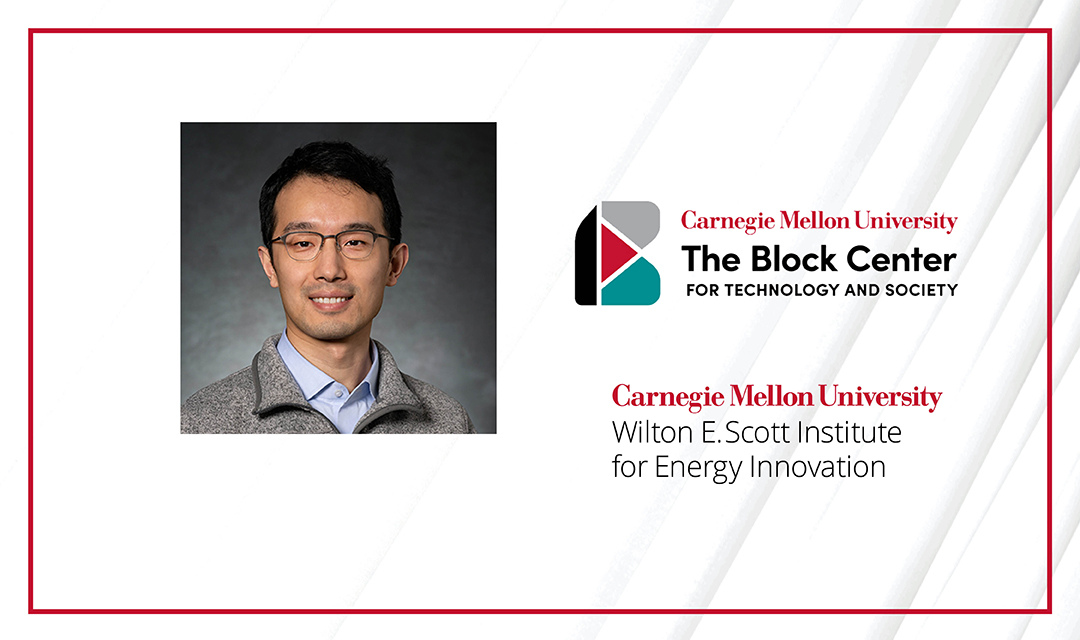Nocturnal AI to solve energy curtailment
Giordana Verrengia
Jul 1, 2025

Peter Zhang’s research, which blends components of economics, policy, and engineering to accommodate AI’s growing energy demands with minimal disruption, received the inaugural AI + energy research award co-sponsored by The Scott Institute for Energy Innovation and The Block Center for Technology and Society at Carnegie Mellon University.
A central question, How can we optimally design energy supply chains and schedule AI work to best utilize solar and wind energy?, is timely amid mounting curiosity about the most efficient way to power AI data centers as they grow in number. Zhang’s approach gets in front of concerns about large language models and other AI programs producing unsustainable greenhouse gas emissions by finding a solution in two renewable energy sources.
Zhang, an assistant professor of operations research at Heinz College for Information Systems and Public Policy, brings an overlooked issue into focus—energy curtailment, a reduction of usable energy caused by grid restraints.
“The power grid has to be physically balanced to function, so we can’t arbitrarily feed it these different renewable energies,” said Zhang. “Given that we have a certain amount of installed capacity, sometimes wind and solar farms can’t use all of their energy and they have to dump it. This project is a perfect opportunity to understand the potential of applying energy that isn’t being used to support the future load from data centers that we’ll see on the grid.”
Solar and wind energy can’t be stored overnight due to storage and grid constraints. Humans follow a largely predictable demand curve for energy, but that demand curve does not match the renewable energy production curve. Nocturnal and more flexibly-scheduled AI workload seems a logical choice to solve that mismatch since many computational functions like processing and cleaning up data sets, and training large machine learning models, can be scheduled ahead of time as batch jobs—improving the supply-demand match, reducing wasted energy, and creating less interference between human consumption and AI energy demands.
Zhang’s approach to powering AI is not only complementary to human use, but solves a problem rooted in grid restraints.
“This project thinks completely out of the box to say that AI doesn’t have to follow the sun and the moon or the human pattern of periodic sleep and work,” said Zhang.
Making this out-of-the-box thinking possible is a two-stage optimization model that Zhang is developing with help from publicly available cloud computing data that identifies computing jobs and their characteristics, like duration and usage, to paint a picture of how current AI models consume energy and how that trend could change in the future.
The model's two stages are designed to provide guidance on macro-level decisions, like where to build data centers and how to design an engineering system; and micro-level variables that determine grid capacity on a daily to hourly basis.
